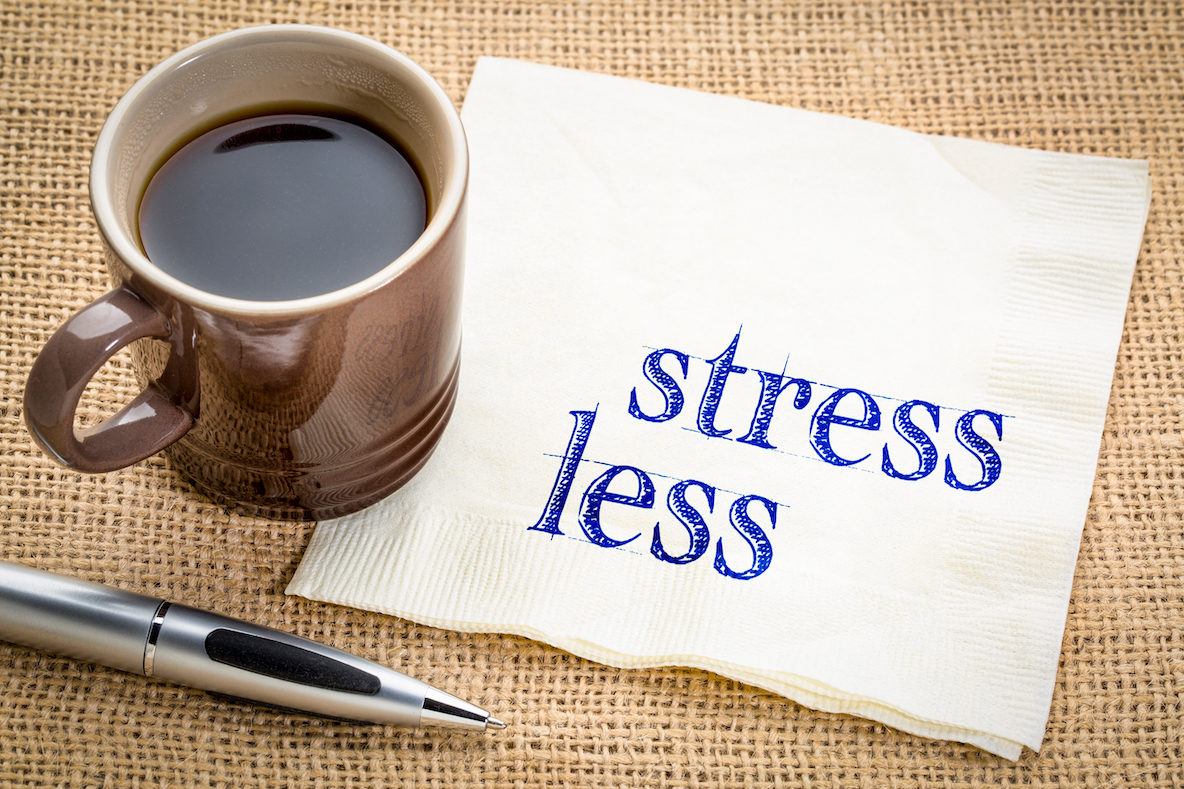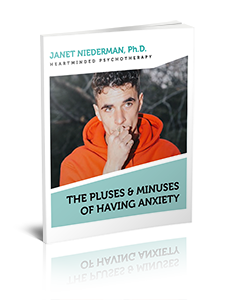So much has been written about anxiety reduction already – what new method could still be out there? I’ll describe an easy two-step skill which I think is helpful. It does require a brief review of two concepts – anxiety and self-esteem. Stay with me for this quick summary so that when I describe the skill, you’ll appreciate its power.
Two Components of Anxiety – Thoughts and Physical Symptoms
In order to discuss anxiety, we must always start with an understanding of fear. When our senses perceive a present danger, FEAR turns on our body’s survival system to fight or flee the danger. In contrast, when our thoughts imagine a future danger, ANXIETY turns on that same survival system to a lesser degree. If thinking anxiety-producing thoughts weren’t enough of a problem, there’s an additional issue. When our nervous systems initially developed thousands of years ago, wild animals were our main threat. Nowadays, as social beings, our list of potential threats has expanded to possibly include persons such as: a parent, a teacher, a schoolmate, an employer, or a cop. Anxious thoughts about any of these individuals may produce physical symptoms, including rapid heart rate, shakiness or sweating.
Today, I’m going to show you how to ground your nervous thoughts within the larger context of your self-esteem so that these thoughts can’t reverberate endlessly throughout your system and wreak havoc.
Self-Esteem and Its Relationship to Anxiety
The working definition of self-esteem is this: Liking yourself even though you’re not perfect. It would be simple enough to like yourself if you were perfect but, in fact, no one is. Accepting your imperfections is simply part of the human condition; hence, we return to “I like myself even though (I’m human and) I’m not perfect.” If this statement feels too difficult, start from “Someday I will like myself even though I’m not perfect.”
Many writers have noted the inverse relationship between self-esteem and anxiety – the lower the self-esteem, the higher the anxiety. Dr. Niall McLaren, an Australian psychiatrist, explains in his book, Anxiety: The Inside Story (Future Psychiatry Press, 2018), how individuals who have little self-esteem depend on others for approval – but the prospect of not receiving such approval feels too awful and results in anxiety. An American psychologist, Dr. Glenn Schiraldi, in his book The Self-Esteem Workbook (New Harbinger, 2016), also speaks about the importance of having solid self-esteem when meeting daily challenges. He notes that the mistakes you make can’t be all that terrible when seen in the context of liking yourself. I will be presenting his “Nevertheless” skill here, which I don’t believe has received the attention it deserves. Since the skill’s original phrasing was awkward, I’ve revised it slightly and am calling it the “Two-Step.”
The Two-Step Skill to Reduce Anxiety
The name “Two-Step” reminds you to focus first on the negative and then on the positive.
Create two sentences. The first one includes your feelings about a negative situation. The second sentence is an expression of your self-esteem.
Example:
Negative: I’m scared about that job interview. Positive: I value my competence.
Combine them into one sentence, beginning with the words “Even though…”
Even though I’m scared about that job interview, I value my competence.
Wow – take a moment to see how that feels to you. Breathe it in, and experience how the anxiety gets limited by the larger awareness of yourself.
Now that you know the sequence, let’s combine these steps a little more quickly.
Additional Examples:
Even though I get socially awkward, I like myself.
Even though I worry about stuff all the time, I appreciate myself anyway.
Even though that guy might say mean things to me, I know I’m a worthwhile person.
Even though I’m crummy at math, I’m a smart person nevertheless.
Even though I might get really anxious, I like myself anyway.
This skill is effective not only for facing future situations but also for reducing the tensions you might be carrying from situations in the past.
Even though that group bullied me, I love myself now just as much as I did before.
Even though that situation frightened me, I am safe and truly okay.
I encourage you to not pass judgment on the effectiveness of this method while you’re sitting comfortably reading about it. Remember to use it at a moment-of-need; you may be surprised at how well it works – especially if you repeat your tailor-made two-step sentence a number of times.
In sum… acknowledge your uncomfortable feelings while grounding yourself in self-acceptance. This approach goes a long way in embracing your humanity – I can’t think of anything better.
The Benefits of Using the Two-Step Skill
- In contrast to affirmations that focus only on the positive or on unachievable perfection, this Two-Step acknowledges the negative alongside the positive, becoming a truthful statement that can be said wholeheartedly.
- In contrast to cognitive approaches that ask you to replace your thoughts, this method works with the thoughts you have.
- It provides a way to face reality, which may be negative, without being overwhelmed by it.
- The more you work to strengthen and heal your self-esteem in other ways, the more effective the second half of the sentence becomes when using this skill.
- Some people may already be familiar with Emotional Freedom Technique (EFT), which relies upon this type of sentence in its set-up – that’s excellent. What is notable here is that this Two-Step can be used on its own, whether (1) for public situations where doing EFT might be embarrassing or (2) for people who are uncomfortable using EFT altogether.
The Limitation of Using the Two-Step Skill
- When anxiety is extremely high – for example, your physical symptoms of anxiety are at near-panic level or higher, working only with your thoughts may not be powerful enough. In these situations, it is imperative to also have a way to physically calm yourself – whether that be by deep breathing, muscle relaxation, etc. The Two-Step works best in situations where you are experiencing mild-to-moderate levels of anxiety. On the other hand, increasing the frequency of saying the Two-Step to yourself may also increase its effect.
I encourage you to begin using the Two-Step, allowing your anxiety to gently reduce.
If you wish to leave a comment, please search for this post on my Facebook page.
Please contact me for a free 15-minute phone consultation to learn how I can be of service.
To find out more about my services, click here: Anxiety Therapy
 Janet Niederman, Ph.D. is a Los Angeles psychologist in private practice. She’s worked with clients with a variety of issues for thirty-five years and has provided clinical supervision to doctoral-level psychology interns as well. She specializes in treating anxiety, depression, and ADHD.
Janet Niederman, Ph.D. is a Los Angeles psychologist in private practice. She’s worked with clients with a variety of issues for thirty-five years and has provided clinical supervision to doctoral-level psychology interns as well. She specializes in treating anxiety, depression, and ADHD.


